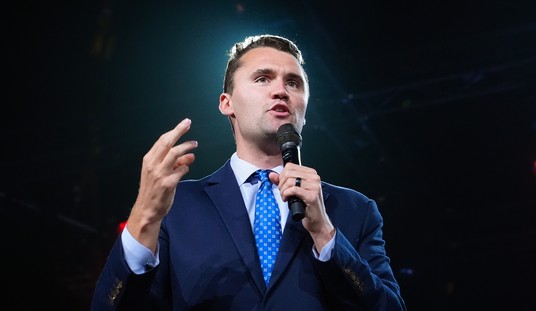One of the bogus reasons that Vladimir Putin laid out for his incompetently executed invasion of Ukraine was to prevent Ukraine from joining NATO. Against all evidence and commonsense, he claimed that Ukraine’s membership in a defensive alliance like NATO posed a direct threat to Russia. Putin and his acolytes would have us believe that NATO has just been lying in wait for the chance to bring Ukraine into NATO so NATO can invade Russia or something. Instead, in something of a geopolitical “own goal,” the invasion of Ukraine has created a de facto expansion of NATO to include Ukraine, and a de jure expansion of NATO to include Finland and Sweden is only months away.
Thursday, the NATO foreign ministers met in an emergency session to discuss the war in Ukraine and, more specifically, how to keep Ukraine in the war. This quote is from my post titled, Game-Changing Weapons Begin to Flow to Ukraine After NATO Emergency Meeting.
For starters, the attendees were not only NATO nations; there were also observers present: the European Union, Sweden, Finland, Georgia, Japan, South Korea, Australia, New Zealand, and Ukraine. If Putin was afraid of being surrounded before, he should take a quick look at his map now (just a reminder that Japan and Russia still have an unresolved border dispute, see Russia conducts military exercises in disputed islands).
A very insightful statement came from Ukraine Foreign Minister Dmytro Kuleba, “I think the deal that Ukraine is offering is fair. You give us weapons; we sacrifice our lives, and the war is contained in Ukraine.”
“I think the deal that Ukraine is offering is fair. You give us weapons; we sacrifice our lives, and the war is contained in Ukraine. This is it.” – Ukraine Foreign Minister @DmytroKulebahttps://t.co/tQAvSDw4Y6
— Ben Domenech (@bdomenech) April 8, 2022
All of the actions taken by NATO countries indicate they have agreed to Mr. Kuleba’s deal.
What is happening in Ukraine is far more than a proxy war; it has turned into a low-key way of bringing Ukraine into NATO.
While a lot of attention was paid to Ukraine receiving armored vehicles (T-62s and BMPs from Czechia and an S-300 surface-to-air missile system from Slovakia), the big news, in my view, was Ukraine buying 16 ZUZANA 2 self-propelled 155mm howitzers.
Why is the sale of 16 artillery pieces a big deal? Three silly millimeters. Russian artillery uses a 152mm projectile. The NATO standard is 155mm. By the way, Georgia is also looking at buying this artillery. Like Ukraine, they also use 152mm artillery, making them NATO compliant.
Western anti-tank weapons systems have already pushed the once-ubiquitous RPG-7 into near extinction. This proliferation of advanced, man-portable anti-tank weapons from US Javelin and British NLAW to German Panzerfaust 3 has achieved something of NATO standardization. On the anti-aircraft side of the ledger, the US Stinger and British Starstreak are pushing the Russian Igla the way of the dodo.
Also lacking notice is Australia’s providing combat-proven Bushmaster vehicles to aid mobility. The Bushmaster is similar to the US MRAP and provides a great deal of crew protection and survivability. Britain has also committed to sending 120 of their MRAP-equivalent, the Mastiff, to Ukraine. Again more standardization.
The US is also involved in extensive intelligence sharing with Ukraine.
The director of the Defense Intelligence Agency described the sharing of information and intelligence between the United States and the Ukrainians as “revolutionary in terms of what we can do” at a Thursday congressional hearing.
Army Lt. Gen. Scott Berrier told the House Armed Services subcommittee on intelligence that he could go into greater detail on how this is being done in a closed session.
Army Gen. Paul Nakasone, who heads both Cyber Command and the National Security Agency, said that “in my 35 years” he has never seen a better sharing of accurate, timely and actionable intelligence than what has transpired with Ukraine.
This kind of sharing, which involves a physical location, produces standardized intelligence collection and analysis procedures. The processes developed here will become the standard way the Ukrainian Army operates. Again, NATO standardization. Needless to say, along with intelligence sharing comes joint operational planning. For NATO to efficiently provide what Ukraine needs, it needs to be involved in the staff work of Ukraine’s combat planning.
Alongside the arms and slow-motion process of bringing Ukraine’s Army into NATO standards of weaponry and procedures, there is active collaboration with Ukraine’s armed forces. I mentioned intelligence sharing above. Joe Biden let it slip that the US Army is training Ukrainian soldiers on unspecified tasks in Poland (see Joe Biden Spilling the Beans on Training Troops in Poland and Calling for Regime Change in Russia Is Reckless and Dangerous). On Wednesday, Pentagon spokesman John Kirby revealed that Ukrainian soldiers are in the United States receiving “professional military training,” including how to use the Switchblade “suicide drone” system. Those Slovak howitzers will require crew training; it takes about a week to make a crew proficient if they have already served in an artillery unit. We don’t know where the training will take place, but I would bet there is a greater chance of Ukrainian artillerymen training in Slovakia than Slovak soldiers going to Ukraine.
Friday, the Wall Street Journal broke the story that Czechia, Slovakia, and other governments are discussing repairing and rebuilding damaged Ukrainian equipment.
Beyond tanks, Central European governments, including the Czech Republic, are weighing the risks of letting Ukraine bring war-damaged equipment into their countries for repairs. Slovakia, which has no tanks available to give, has discussed the issue, a senior Slovak official said.Those deliberations are part of a realization that Russia’s war with Ukraine could drag on for months if not longer—and that, in a war of attrition, Russia’s overwhelming advantage in equipment could tilt the scales in Moscow’s favor.“If the war is going to get longer and longer, the war equipment that is being damaged needs to get serviced,” said a Czech defense ministry official. “Ukrainian repair houses are 100% busy, and they are asking other nearby allies to help them with repairs.”
Inevitably, NATO will provide Ukraine with real tanks and infantry fighting vehicles to replace the Russian scrapheaps they and the Russian Army are using. At that point, Ukraine will be equipped and trained like any other NATO country.
What we are seeing is a complete integration of Ukraine into NATO without an official declaration. Ukrainian troops are being armed, trained, supplied, and provided with operational intelligence and planning by NATO. Shortly, we can expect to see major repairs of Ukrainian equipment performed outside Ukraine. Inevitably, new Ukrainian formations will be organized and trained in areas that Russian missiles can’t hit. We are also seeing a complete reversal of where NATO was just a couple of weeks ago, Department of Defense Dithers Over Armored Vehicles for Ukraine as Time for Action Slips Away.
There are risks associated with these actions. Russia could conceivably launch an attack on some site in a NATO country engaged in supporting Ukraine, though given what we’ve seen about the Russian military, that is a high-risk-low-payoff move. But the openness of the transfer of the S-300 surface-to-air missile system from Slovakia to Ukraine, which Russia had threatened to attack any such move, leads one to believe that NATO has decided that Putin is a lot like the midget behind the curtain in the Wizard of Oz and that the risk of not expanding NATO is exponentially greater than the risks associated with enlarging the alliance either formally or informally.














Join the conversation as a VIP Member